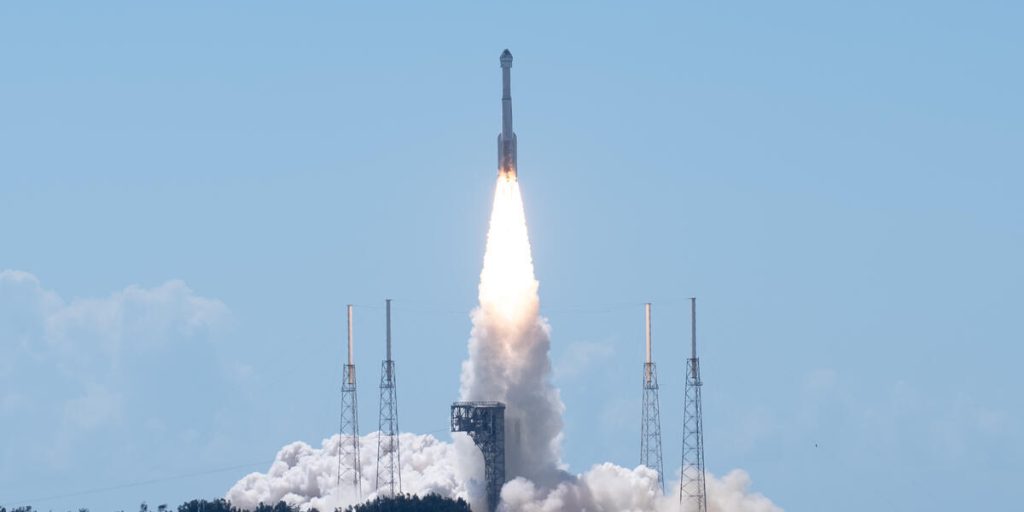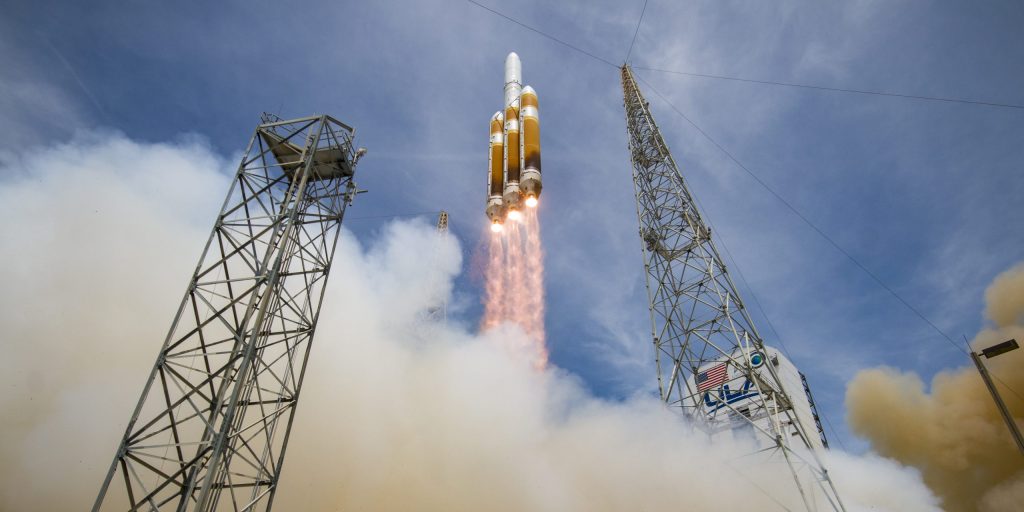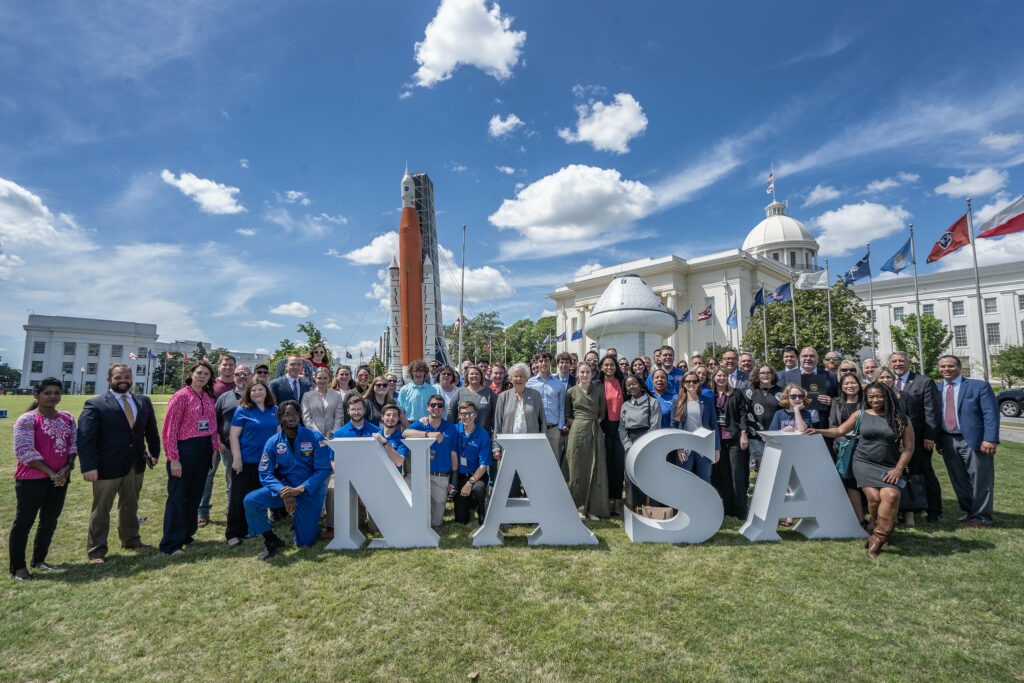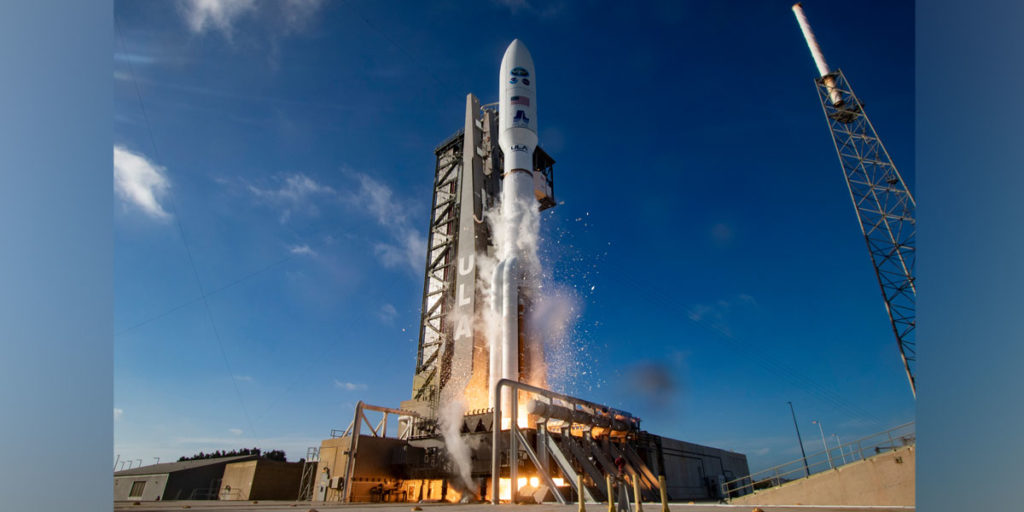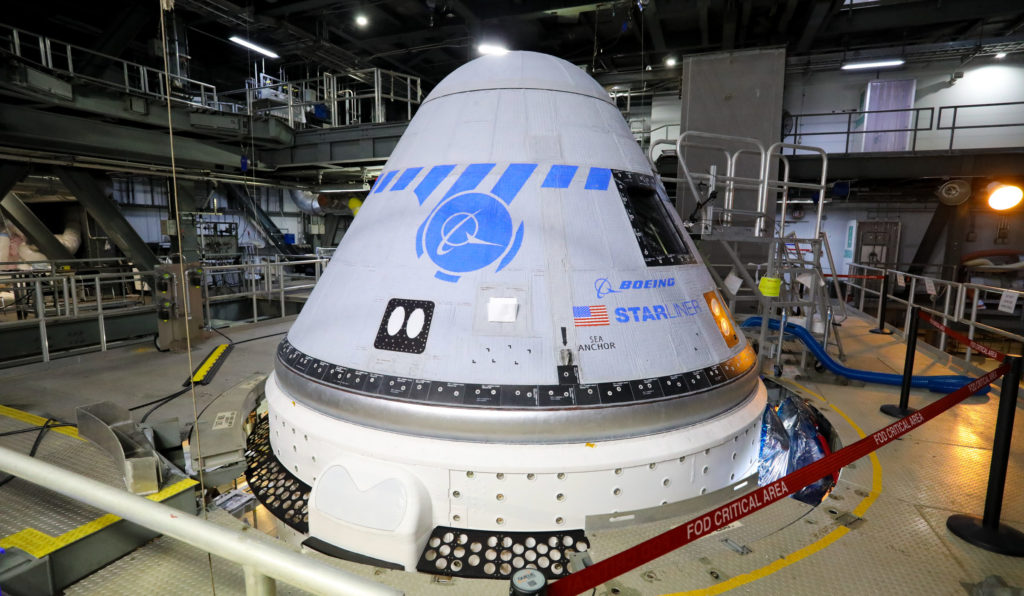Boeing’s Starliner space capsule met up early Saturday morning with the United Launch Alliance (ULA) Atlas V rocket that will carry it into space later this month.
The unmanned Orbital Flight Test-2 (OFT-2) to the International Space Station (ISS) is scheduled to launch on July 30 from Cape Canaveral Space Force Station in Florida.
ULA’s Atlas V rocket was built at its state-of-the-art manufacturing facility in Decatur. Boeing’s design center in Huntsville has provided all of the structural design for the Starliner, while its Phantom Works division, which has an operation in Huntsville, has provided the power systems for the capsule.
A successful OFT-2 will allow NASA and Boeing to move forward with the Starliner’s first crewed mission later this year. NASA astronauts Barry “Butch” Wilmore, Nicole Mann and Mike Fincke have already been selected for the flight to the ISS.
A previous Starliner mission achieved mixed results, necessitating a second uncrewed test flight.
Steve Stich, the head of NASA’s Commercial Crew Program, expressed his optimism for the mission.
“I am extremely proud of the NASA and Boeing Starliner teams as they methodically work toward the OFT-2 mission next month with final checks of the crew module and service module hardware and software as we prepare for this important uncrewed test mission,” Stich said. “Closing all of the Independent Review Team findings for the software and communications systems is a huge milestone for the Commercial Crew Program and included many long hours of testing and reviews by our dedicated Boeing and NASA teams during this Covid-19 pandemic.”
RELATED: Watch: Ride inside Boeing’s Starliner on its historic journey to space and back
The performance of ULA’s Atlas V was one of the highlights of the first Starliner mission.
The workhorse rocket delivered the capsule to a pinpoint position in space and received praise from former NASA administrator Jim Bridenstine, as well as from Boeing representatives.
Bridenstine lauded Atlas V’s effort as “a very successful flight. Boeing’s Jim Chilton echoed that sentiment, calling the mission, “a great human-rated Atlas performance.”
The 172-foot-tall rocket will be completed for OFT-2 when the Starliner is mounted aboard the Atlas V. The two will lift off the pad on 1.6 million pounds of thrust at the exact moment the ISS’s orbital plane crosses over Space Launch Complex-41. Approximately 31 minutes after launch, Starliner will reach its preliminary orbit, after which it will head for an automated rendezvous and docking to the station.
It will return to Earth in the desert of the western United States.
The Starliner became the first American-made, human-rated space capsule to land on U.S. soil, rather than in an ocean, as part of its first mission.
Watch the Starliner being rolled out to the pad:
? @BoeingSpace’s CST-100 Starliner spacecraft has started its expedition to Space Launch Complex-41! Once it arrives, the spacecraft will be stacked atop @ULALaunch’s Atlas V rocket for final processing ahead of the Orbital Flight Test-2 launch. pic.twitter.com/8VAMjSJSTR
— NASA Commercial Crew (@Commercial_Crew) July 17, 2021
Tim Howe is an owner of Yellowhammer Multimedia






